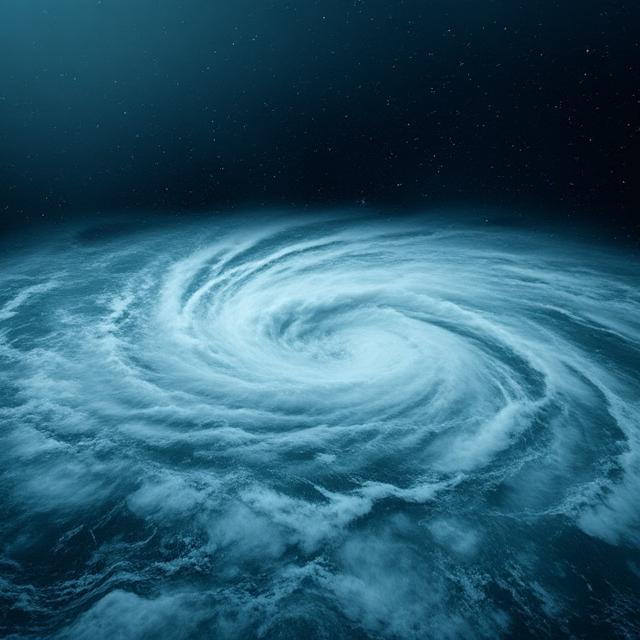Hurricane Melissa: The Record-Breaking Monster Storm That Redefined the Limits of Nature
🌊 Hurricane Melissa: The Record-Breaking Monster Storm That Redefined the Limits of Nature
While Cyclone Montha bears down on Andhra Pradesh in India, another side of the world is witnessing something beyond imagination — a storm so powerful that even seasoned scientists and hurricane hunters are calling it unreal.
Meet Hurricane Melissa, the Category 5 monster storm that just made landfall over Jamaica, leaving meteorologists across the globe stunned by its speed, structure, and strength. In less than 24 hours, Melissa transformed from a tropical storm to one of the most powerful hurricanes in Atlantic history, with sustained winds reaching an astonishing 295 kmph.
🌪️ What Makes Hurricane Melissa So Extraordinary?
Hurricane Melissa has stunned experts with its explosive intensification, unprecedented structural dynamics, and record-setting data. Let’s break down what makes this storm so extraordinary and rare.
1. Explosive Intensification: From Storm to Category 5 in 24 Hours
Most hurricanes take days to grow from a tropical storm to a Category 5 powerhouse. Melissa shattered that timeline, intensifying from a mere storm into a super hurricane in just 18 hours.
This rapid intensification is driven by:
- Exceptionally warm Atlantic sea surface temperatures above 31°C.
- Low vertical wind shear, allowing vertical growth of the storm core.
- Abundant moisture and latent heat in the mid-troposphere fueling convection.
Meteorologists describe this as “hyper-intensification”, a process rarely observed in recorded hurricane history.
2. Unprecedented Wind Speeds: 295 kmph and Rising
According to dropsonde readings — instruments dropped from aircraft directly into the storm — Hurricane Melissa clocked peak winds of 295 kmph (183 mph).
For context:
- The 2015 Hurricane Patricia (Pacific) recorded 345 kmph.
- The 2019 Hurricane Dorian (Atlantic) hit 295 kmph — the same mark as Melissa.
Melissa thus stands as one of the strongest Atlantic hurricanes ever observed, officially joining an elite list of catastrophic storms.
3. Record Low Pressure: 892 mb — The Heart of Fury
Melissa’s minimum central pressure dropped to 892 millibars, among the lowest ever recorded in the Atlantic Basin.
This intense drop means Melissa literally sucked in trillions of kilograms of air from its surroundings — over 3 trillion kilograms, as meteorological analyses estimate — creating an enormous pressure gradient that drove its ferocious winds.
Such a low-pressure system acts as a “vacuum engine,” pulling air in and spinning it into destructive vortexes.
4. The Eye of the Storm: Nature’s Perfect Geometry
What stunned meteorologists the most was Melissa’s eye — perfectly circular, extremely well-defined, and almost 20 km wide.
Dropsonde data revealed something even more remarkable — the eye temperature anomaly was -5.21°C, making it the second driest and coldest eye ever recorded in hurricane history.
This means Melissa’s eye had extreme subsidence (downward motion of air), core ventilation, and intense latent heat release — a combination rarely seen together, even in super cyclones.
5. Mesovortices: Mini Tornadoes Within the Eye
Satellite radar imagery from NOAA and GOES-16 detected mesovortices — small, violent swirls rotating around the inner eyewall. These are like tornadoes inside the hurricane, capable of causing severe local turbulence and rapidly shifting wind directions.
This behavior is typical of hyper-intense Category 5 storms, but Melissa’s mesovortices appeared unusually large and fast-moving, suggesting an unstable yet incredibly powerful core structure.
🛰️ Why Did Hurricane Hunters Turn Back Mid-Mission?
The U.S. Air Force Hurricane Hunters, who specialize in flying directly into cyclones to gather real-time data, were forced to abandon their mission mid-flight as turbulence inside Melissa became “uncontrollable.”
The aircraft experienced violent vertical wind shear and microburst turbulence, forcing the crew to return after only partial data collection — something extremely rare.
One crew member described the experience as “the storm was literally shredding the sky.”
🌎 Comparing Melissa with Cyclone Montha in India
While Cyclone Montha in the Indian Ocean is causing heavy rainfall and moderate coastal flooding in Andhra Pradesh, it remains a Category 1–2 equivalent cyclone.
By contrast, Hurricane Melissa stands as a Category 5+ equivalent, many times stronger in both wind speed and energy output.
To put it in numbers:
- Cyclone Montha’s energy output ≈ 1.5 × 10¹⁵ joules
- Hurricane Melissa’s energy output ≈ 8.3 × 10¹⁵ joules
That’s more than five times more powerful — a difference so vast it borders on unimaginable.
☔ Impact on Jamaica: A Nation on the Edge
1. Record-Breaking Rainfall
Meteorological reports estimate 100 cm (1 meter) of rainfall in some parts of Jamaica, leading to:
- Flash floods across low-lying areas.
- Landslides in the Blue Mountains.
- Widespread infrastructure damage across coastal towns.
2. Storm Surge and Coastal Destruction
With a 13-foot storm surge, entire coastal belts, including Montego Bay and Kingston, faced devastating sea intrusion, damaging harbors and beachside infrastructure.
3. Wind Damage Beyond Tolerance
Sustained winds of 280 kmph and gusts approaching 250 mph (400 kmph) devastated homes, power grids, and communication networks. Experts describe it as “a survival event, not an endurance one.”
🌡️ The Science Behind Such Super Hurricanes
Meteorologists and climate scientists are increasingly concerned about the rapid intensification trend observed in hurricanes over recent years.
Factors Behind Melissa’s Strength:
- Ocean Heat Content (OHC): The Atlantic’s OHC hit record highs this year, providing massive energy reserves.
- Favorable Atmospheric Conditions: Minimal wind shear and high moisture levels supported vertical storm growth.
- Climate Change Feedback: Warmer oceans are fueling stronger and faster-forming storms.
Melissa’s behavior might be a glimpse into the future of how tropical systems will behave in a warming world.
🧭 Can Such a Storm Happen in India’s Bay of Bengal?
The Indian Ocean basin has historically produced extremely severe cyclones, such as:
- Cyclone Fani (2019) – 250 kmph winds
- Cyclone Amphan (2020) – 260 kmph winds
- Cyclone Mocha (2023) – 280 kmph winds
However, the conditions that fueled Melissa — particularly the Atlantic’s deep warm water layer and stable outflow — are rarely present in the Bay of Bengal.
That said, global warming is changing storm dynamics, and such “super cyclones” could become more frequent in South Asia too.
📈 Global Records Hurricane Melissa May Have Broken
| Parameter | Hurricane Melissa (2025) | Previous Record | Record Holder |
|---|---|---|---|
| Peak Wind Speed | 295 kmph | 295 kmph | Dorian (2019) |
| Minimum Pressure | 892 mb | 894 mb | Gilbert (1988) |
| Intensification Rate | +95 kmph in 12 hrs | +85 kmph | Wilma (2005) |
| Eye Dryness Index | -5.21°C | -5.15°C | Patricia (2015) |
🔍 Questionnaire Subheadings
1. What is Hurricane Melissa?
Hurricane Melissa is a Category 5 Atlantic hurricane that rapidly intensified from a tropical storm to one of the strongest storms in history before making landfall in Jamaica.
2. How strong was Hurricane Melissa?
Melissa reached 295 kmph sustained winds, with gusts exceeding 400 kmph, making it among the top 3 strongest Atlantic hurricanes ever recorded.
3. Why did it intensify so quickly?
Warm sea surface temperatures, low wind shear, and abundant atmospheric moisture led to explosive intensification.
4. What was the central pressure?
The central pressure dropped to 892 mb, indicating extreme low-pressure dynamics and massive air inflow.
5. What are mesovortices?
Mesovortices are mini-tornadoes inside the hurricane’s eye wall, adding chaotic wind rotation and increasing destructive potential.
6. Did climate change contribute?
Experts believe climate change amplified ocean heat content, which directly fueled Melissa’s rapid growth.
7. What was its impact on Jamaica?
Melissa caused catastrophic rainfall, storm surges, and infrastructure collapse, marking it as one of the worst natural disasters in Caribbean history.
🌍 The Bigger Picture: What Hurricane Melissa Means for the Future
Melissa isn’t just a storm — it’s a climate warning. Scientists are increasingly observing more storms breaking conventional limits of pressure, wind speed, and growth rate.
This hurricane symbolizes how climate systems are evolving faster than our ability to predict them. With rising global ocean temperatures, the line between “extreme” and “normal” storms is beginning to blur.
⚠️ Disclaimer
This article is for educational and informational purposes only. It is based on meteorological data, publicly available research, and observational analysis. Weather systems can change rapidly, and real-time data may differ. Readers are advised to follow official updates from meteorological agencies like the National Hurricane Center (NHC) and India Meteorological Department (IMD) for accurate and timely alerts.












